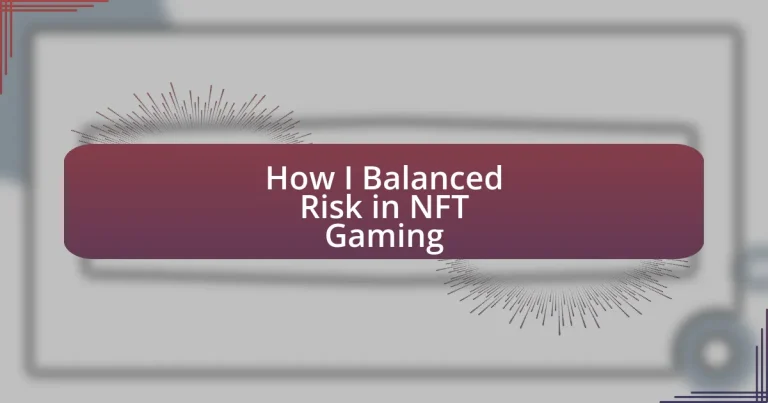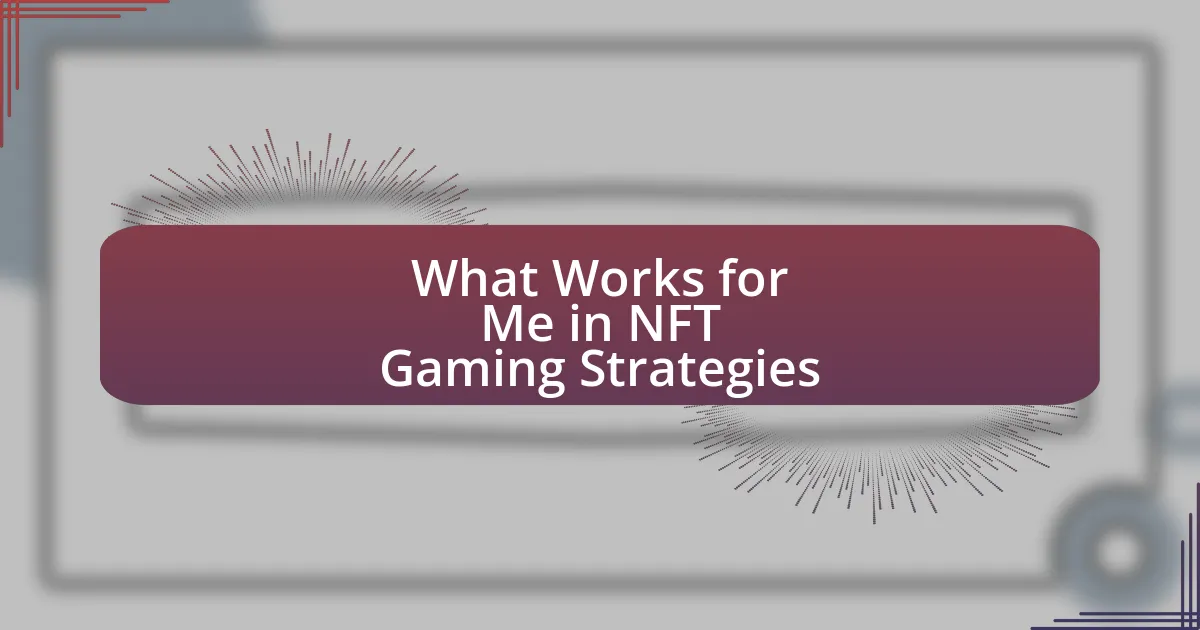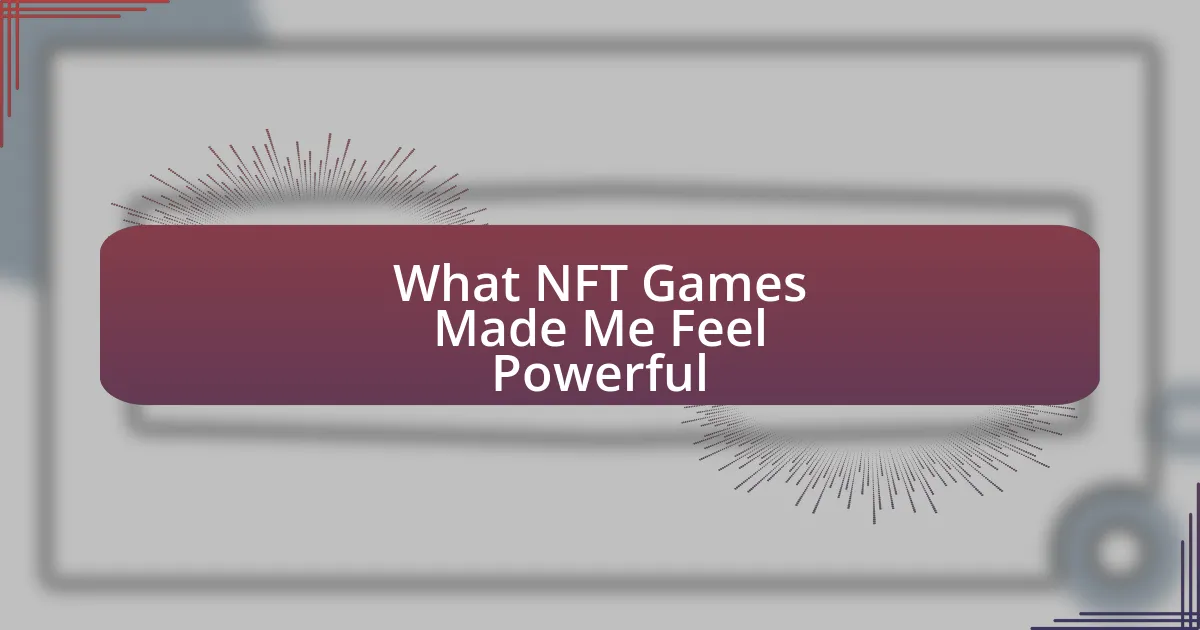Key takeaways:
- NFT gaming involves significant risks including market volatility, potential scams, and developer decisions impacting asset value.
- Financial implications must be evaluated carefully, considering community engagement and long-term project sustainability.
- Diversifying investments across multiple games and projects is crucial for managing risks and exploring varied experiences.
- Building a support network within the NFT community can provide valuable insights and enhance investment strategies.

Understanding NFT Gaming Risks
When I first ventured into NFT gaming, I was captivated by the innovative concept of ownership—a digital certificate confirming my unique in-game assets. However, this excitement was tempered by the realization that the value of these assets can fluctuate dramatically. Have you ever purchased something you thought was a gem, only to watch its value plummet days later? It’s a harsh lesson in the realities of speculative markets.
Another risk I encountered was the potential for scams—unfortunately, these are all too common in the NFT space. I remember almost falling for an enticing offer that seemed too good to be true, only to take a step back and realize the red flags. How do you protect yourself from such pitfalls? Research and a healthy dose of skepticism became my best allies, helping me navigate through the noise and hype.
Additionally, I’ve felt the weight of game developers’ decisions on my investments. When a popular game suddenly closed its doors, I was left with NFTs tied to a defunct platform, and it hit hard. What if the game you love decides to fold? Understanding that the gaming environment can drastically change—and sometimes overnight—shifts your perspective on risk significantly. This uncertainty requires constant vigilance and a proactive approach to safeguarding your virtual assets.
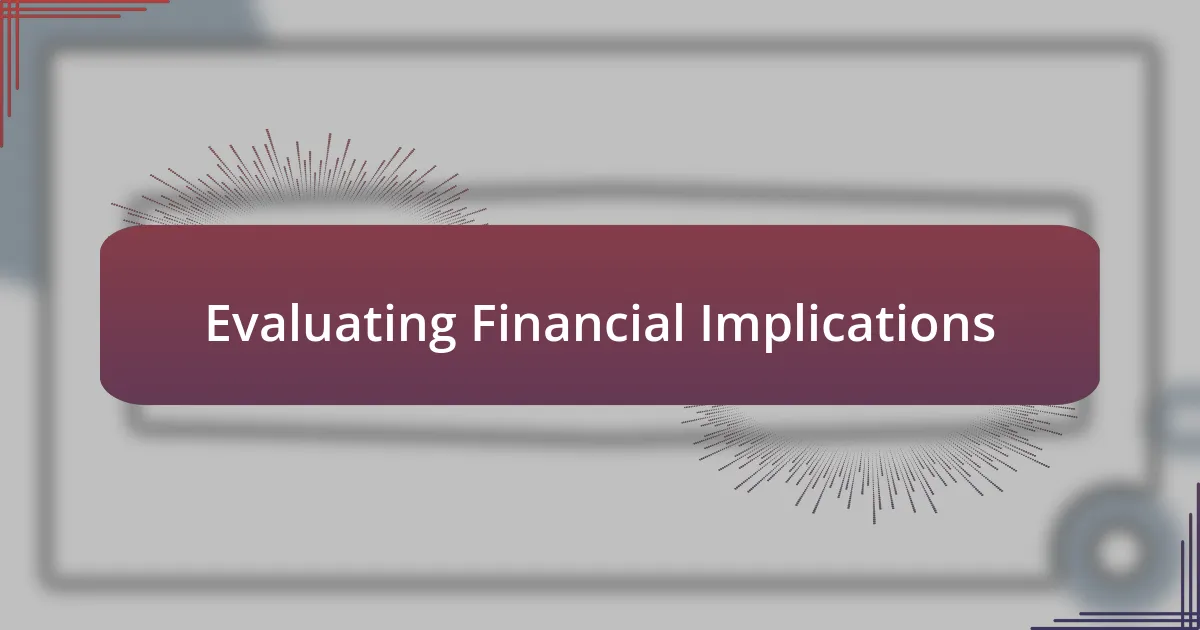
Evaluating Financial Implications
Evaluating the financial implications of NFT gaming is crucial in understanding whether the risk is worth the potential reward. For instance, I recall investing in a highly anticipated game that promised lucrative returns through its unique NFTs. As I watched the price skyrocket initially, excitement turned to unease as reality set in—a significant proportion of players were flipping assets for profit rather than participating in the game. It made me realize how market demand can shift quickly, and this impacted my financial strategy moving forward.
In my experience, assessing the long-term sustainability of projects is essential. One game I was deeply invested in gained traction but seemed to lack a solid roadmap for future development. I felt the weight of uncertainty, knowing that without continuous updates and community engagement, the value of my NFTs could diminish over time. This taught me to always evaluate the fundamentals of a gaming project before committing financially.
Lastly, the role of community in NFT gaming cannot be overstated. I remember joining a forum full of enthusiastic players who shared insights on potential investment opportunities. This collaborative spirit provided valuable information that influenced my buying decisions significantly. It underscored the importance of engaging with others in this space to better gauge financial implications and risks.
| Aspect | Consideration |
|---|---|
| Market Volatility | Prices can fluctuate wildly, impacting NFT value. |
| Project Roadmap | Long-term sustainability relies on regular updates and community engagement. |
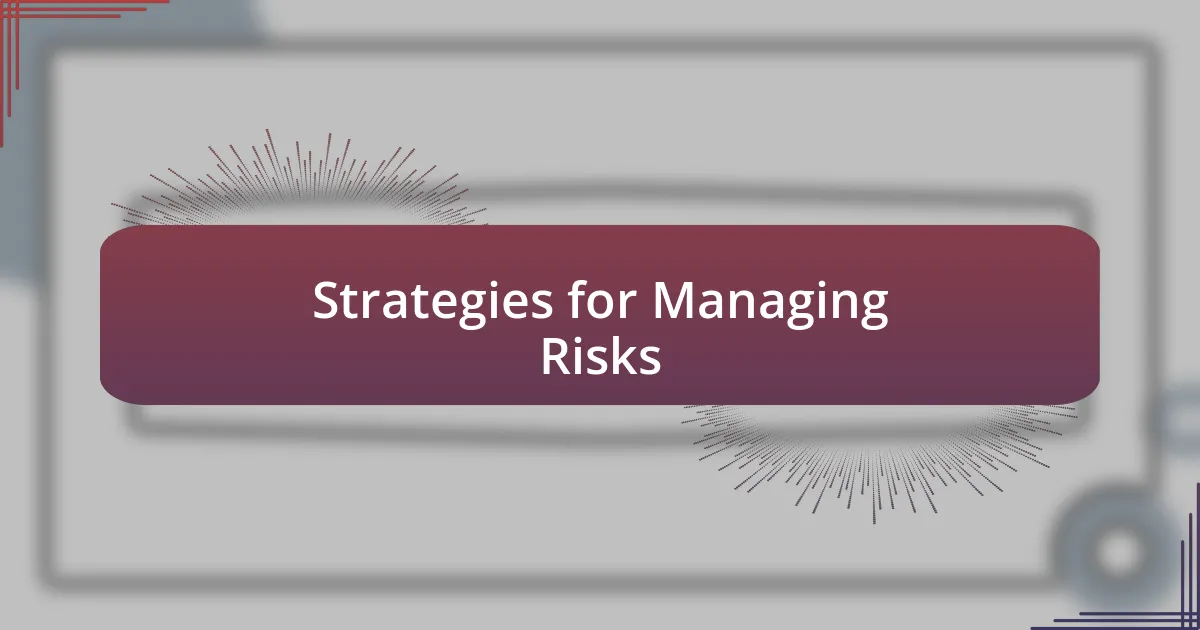
Strategies for Managing Risks
Managing risks in NFT gaming requires a proactive approach and a solid strategy. One method I’ve found beneficial is diversification. Early on, I focused heavily on a single game, which led to sleepless nights as market changes threatened my investment. By spreading my assets across various projects—each with distinct themes and communities—I felt more secure. This approach not only mitigated risk but also allowed me to explore different gaming experiences.
Here are some strategies I use for managing risks in NFT gaming:
- Conduct Thorough Research: Before investing, I dive deep into a project’s whitepaper, community feedback, and market trends.
- Set Clear Budgets: I allocate a specific amount for NFT purchases, ensuring I don’t exceed my financial limits.
- Monitor Market Trends: Keeping an eye on market fluctuations helps me make timely decisions about buying or selling.
- Engage with the Community: Participating in online discussions and forums gives me access to diverse perspectives and can signal potential risks.
- Utilize Safety Nets: I often utilize features such as stop-loss orders where available, to limit potential losses.
In my experience, being aware and prepared for changes has always helped me feel more in control, reducing the anxiety associated with high-stakes investments. Implementing these strategies has turned my approach into a more thoughtful one rather than just a game of chance.
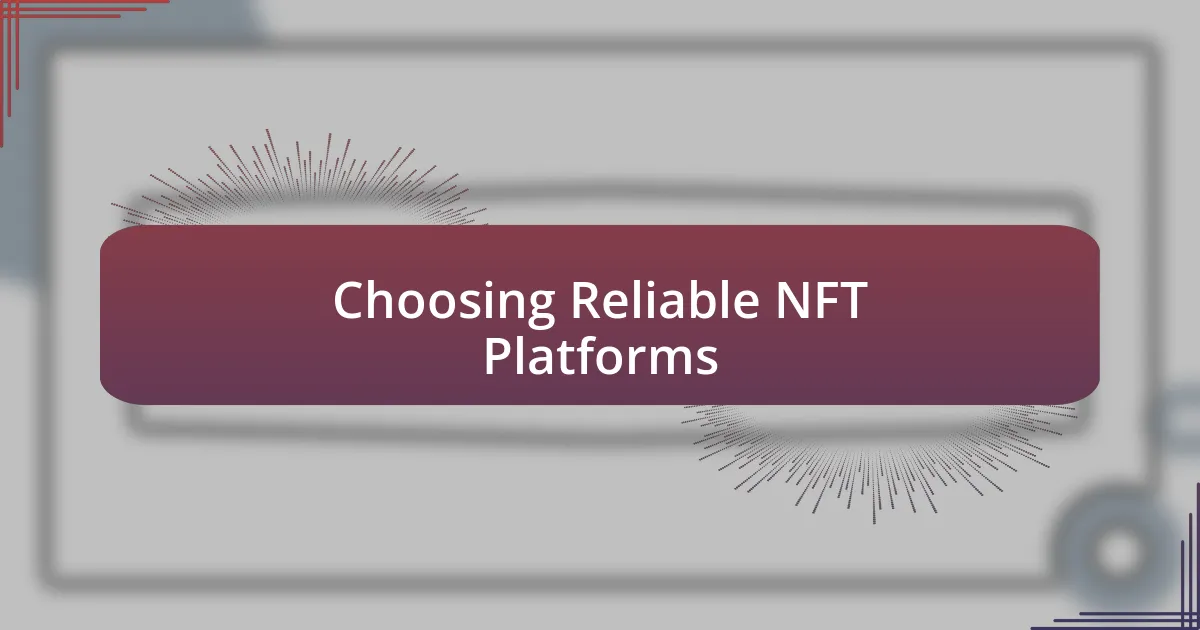
Choosing Reliable NFT Platforms
Choosing the right NFT platform is crucial for safeguarding your investments. I remember when I first entered the NFT gaming space—I jumped onto a trending platform without truly vetting it. This rushed decision led to a frustrating experience when I faced transaction failures and a lack of customer support. Now, my go-to approach is to look for platforms with solid security measures, transparent practices, and a responsive community.
Another thing I prioritize is platform reputation. I’ve learned that user reviews and discussions can reveal a lot about a platform’s reliability. For example, I once noted that a highly-rated marketplace had built a strong community through active engagement and consistent updates. This gave me confidence that even if issues arose, there would be resources and support to navigate them together. Isn’t it reassuring to know that a platform values its users?
Lastly, understanding the platform’s features and fees is vital. Initially, I was drawn to platforms with flashy designs and catchy ads, only to later discover hidden fees that ate into my profits. It dawned on me that transparency in fee structures indicates trustworthiness. Choosing a platform that clarifies all terms and conditions not only protects my investments but also enhances my overall gaming experience. After all, who wants surprises when it comes to money?
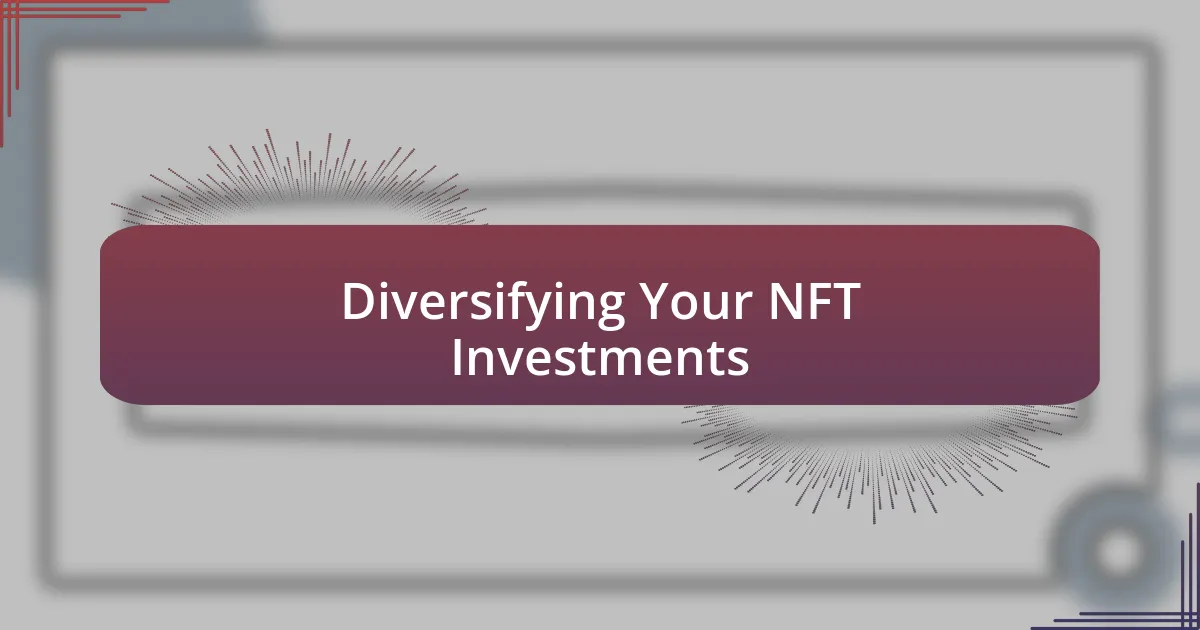
Diversifying Your NFT Investments
Diversifying your NFT investments is like weaving a safety net in the unpredictable world of gaming. Early on, I made the mistake of putting all my resources into one game, convinced it would be the next big hit. When that project faltered, I felt the sting of regret. Now, I make a point to spread my investments across different games and genres, embracing variety as a strategy to manage risk. Have you ever felt the weight of a single investment? For me, diversifying has transformed my approach.
I’ve found that exploring different assets not only cushions against losses but also opens doors to unique experiences within the NFT space. For instance, while one game may not be performing well, another could skyrocket in popularity overnight. I vividly recall purchasing NFTs from lesser-known indie developers who delivered surprisingly engaging gameplay, which reinvigorated my overall interest. Doesn’t it feel great when an underdog surprises you?
Furthermore, I keep an eye on emerging trends and communities. There’s something exhilarating about jumping into a new project early, but I always ensure it’s balanced with more stable investments. The thrill of discovery is fun, but it should never overshadow prudent decision-making. I think about it this way: isn’t it smarter to mix a little adventure with a solid foundation?
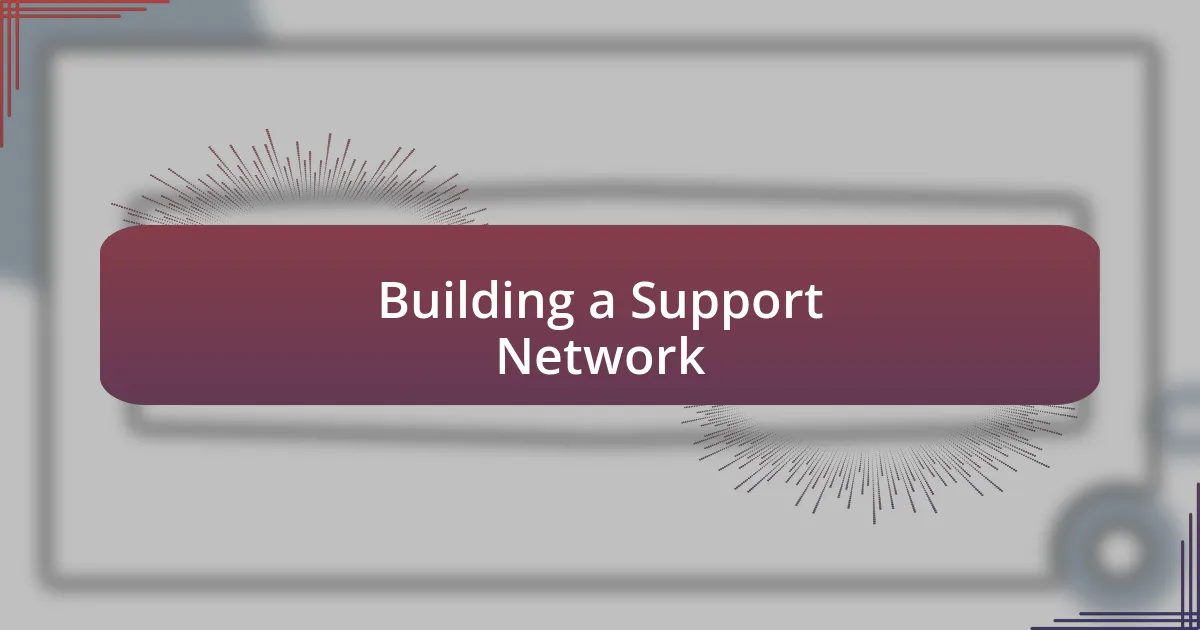
Building a Support Network
Building a solid support network in the NFT gaming community is crucial for navigating the complexities of this space. I remember feeling overwhelmed when I first joined Discord groups and forums dedicated to NFT games. Connecting with others who share similar interests not only helped me gain insights into different projects but also provided encouragement during those inevitable rough patches. Have you ever sought advice and found a hidden gem of wisdom that changed your perspective?
Engaging with a vibrant community has repeatedly rewarded me. I’ve participated in AMAs (Ask Me Anything) with game developers and interacted with seasoned investors who offered invaluable guidance. One instance that stands out was when a fellow gamer shared his strategy on leveraging community resources, which drastically improved my investment decisions. Isn’t it fascinating how a simple conversation can lead to significant changes in our approach?
Additionally, I believe that forming genuine relationships can lead to lasting opportunities. Collaborating with peers on projects can not only enhance learning but also create a sense of accountability. I often find myself reaching out to friends for feedback on my investments, and it’s remarkable how different perspectives can unveil aspects I hadn’t considered. Quite honestly, building this network enriched my experience, making every success and setback feel shared rather than solitary.
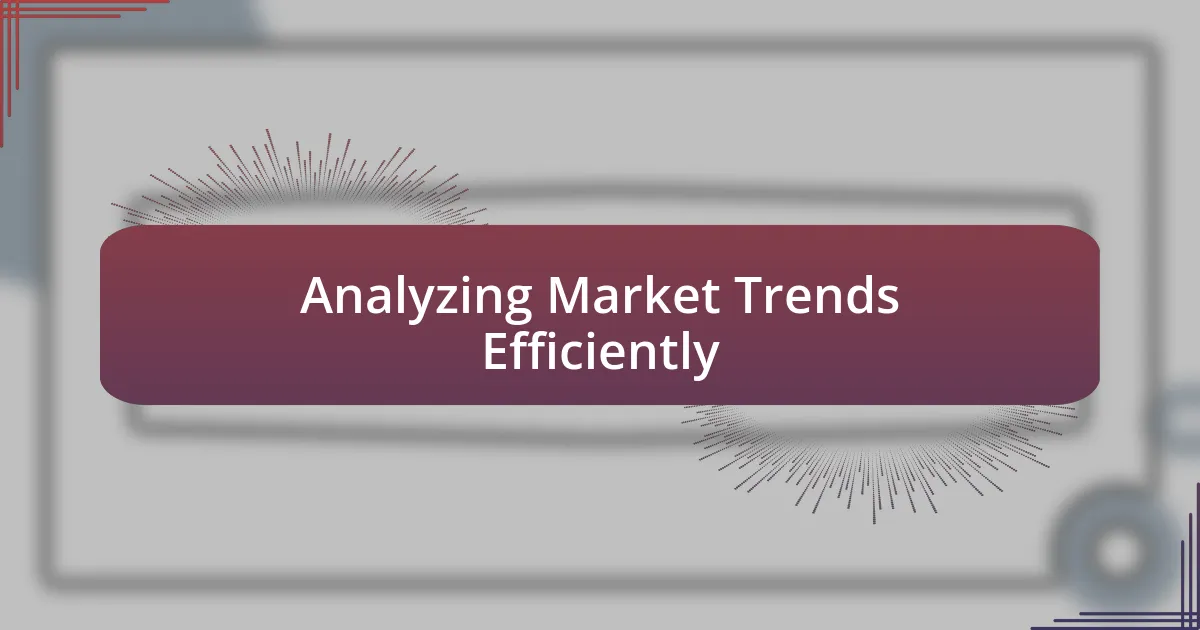
Analyzing Market Trends Efficiently
Analyzing market trends in NFT gaming requires a keen eye and an open mind. I recall a time when I relied heavily on data charts and sales figures, but I quickly learned that understanding the broader context was just as important. Have you ever noticed that sometimes the numbers don’t tell the whole story? For me, diving into community sentiment became a game-changer, revealing shifts in interest that pure analytics could miss.
I’ve also found value in comparing current trends with historical patterns. There was a moment when a particular game’s hype reminded me of past NFT successes, and that insight helped me weigh potential risks and rewards effectively. Observing how certain styles or mechanics waxed and waned over time has sharpened my ability to predict which projects might be next to take off. Isn’t it fascinating how history often repeats itself, especially in the fast-evolving world of NFT gaming?
Furthermore, leveraging social media platforms has enriched my analysis beyond traditional metrics. By following discussions on Twitter or Reddit, I can gauge the community’s pulse and identify trends that numbers alone may overlook. Once, a trending topic about environmental sustainability in gaming influenced my decisions on which NFT projects to support. It reinforced how a single conversation can open up new avenues for informed choices. How do you incorporate social insight into your market analysis?

